Today's commentary
Submitted by Avaruna (Greenland), Evan (USA), Emil (Danish), and Titte (Greenland)
The focus of today was to break into our groups and work in the field on each of our specific topics that we chose earlier. There were six different groups: Atmosphere, Sea Tomatoes, GeologyThe science that deals with the dynamics and physical history of the earth, the rocks of which it is composed, and the physical, chemical, and biological changes that the earth has undergone or is undergoing., Musk Ox, Chemistry and Health. We were all shuttled out near the start of the trail to the waterfall which was where all the groups started. It was very rainy out so we all brought our rain gear to stay dry while gathering samples and recording data.
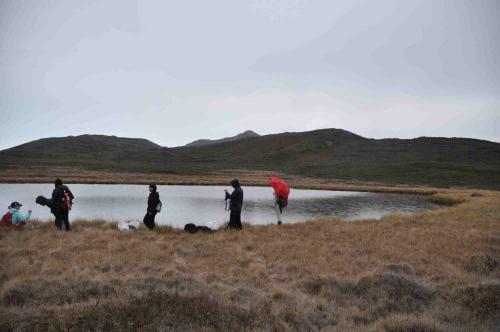
The Atmosphere team followed the Sea Tomato group around gathering samples at the lakes and measuring UVA and –B levels which must have been distorted by the cloudy weather. In atmosphere we also focused on getting atmospheric data from areas with different kinds of vegetation.
The chemistry team took some samples of water and soil on/near by the sea tomato lake, Long Lake and in the lake near by the Long Lake. The samples are going to be used for measuring different nutrients of how they have an impact on the life on the lake.
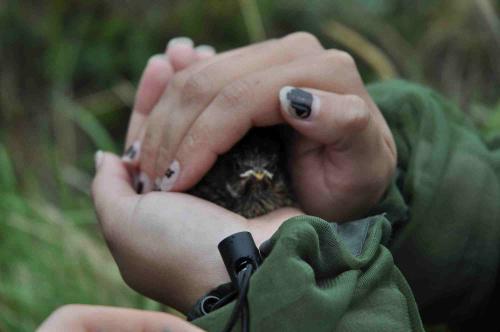
The Sea Tomato team took samples at four lakes around the road. We also collected many samples of the actual sea tomatoes from both sides of Sea Tomato Lake. Some of the other lakes had sea tomatoes in them too but they were not as big and plentiful as the main lake.
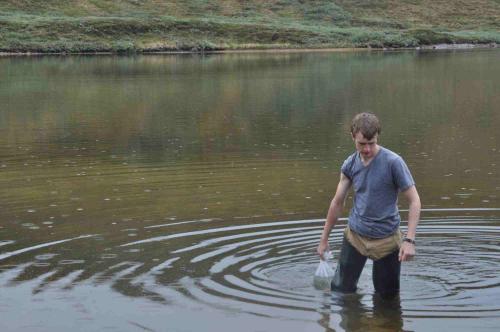
The Musk Ox team tracked and found two musk ox and collected scat and fur samples from the surrounding area. They also got pictures of hoof marks and plants that the musk ox was feeding on.
The atmosphere and geology teams took different samples and tests at some locations and recorded their results. The Health team got some interesting studies on sleep using the armband health recorders.
But despite the rainy weather all the groups carried on gathering their first sets of data in their respective fields. We presented our data to each other when we got back home.
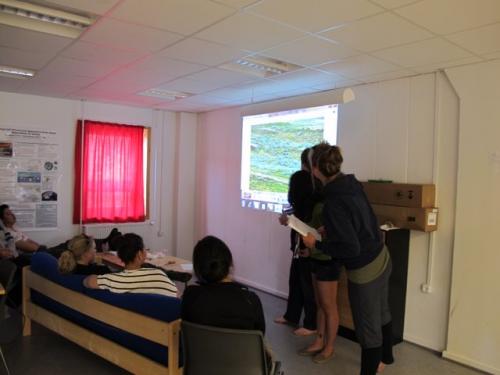
This evening a polar bear was shot in Kanger, and the entire town gathered to see the animal. It was quite the event since polar bears aren’t seen around here often, and it was exciting to be a part of this event, how brutal it may seem.
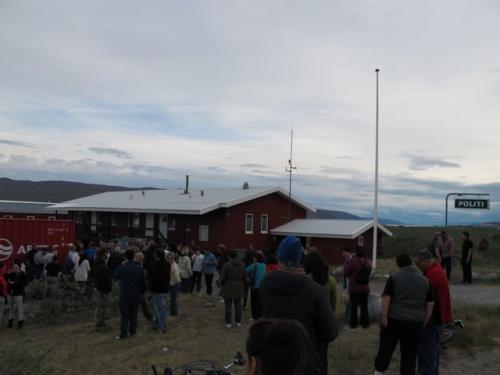

Today's agenda highlights
Reviewing how to record data
Field Research
Field research groups: presentations
Polar bear visit
Today's guest
Karen Schleiss - educator and science student
Vocabulary
ujaqqat (Greenlandic) - rocks
nanoq (Greenlandic) - polar bear
sinilluaris (Greenlandic) - sleep well all


Comments